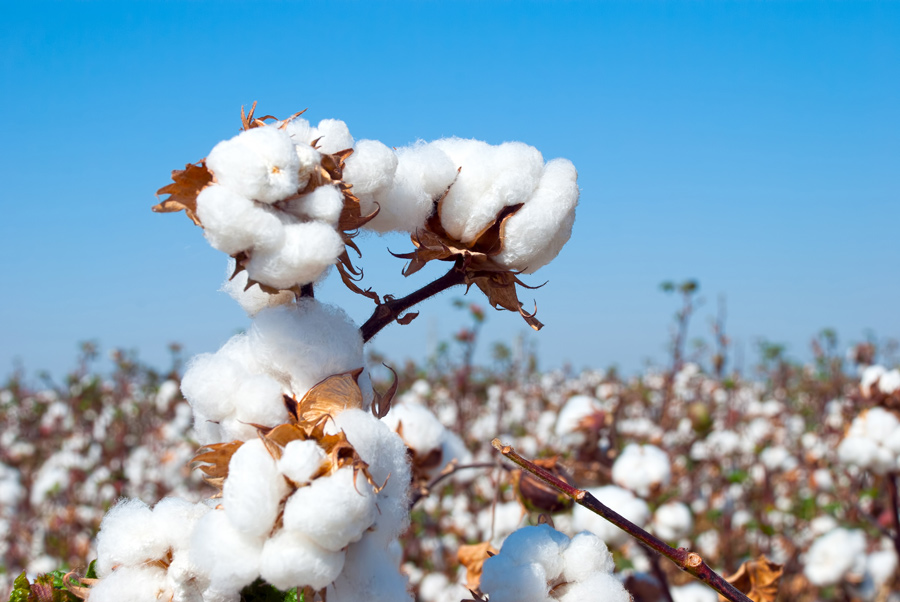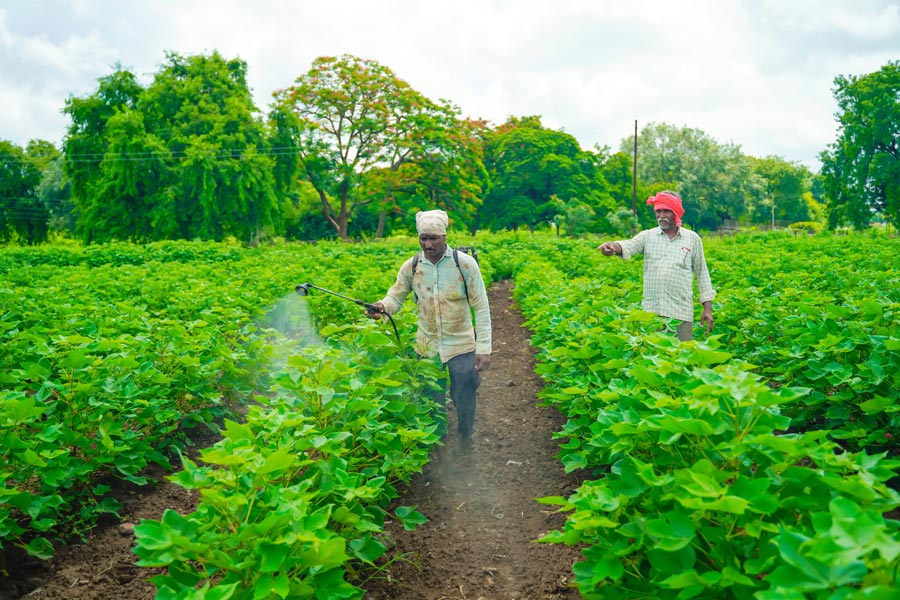Genetically modified cotton: How has it changed India?
Since the introduction of this plant, Bt cotton has been adopted widely across India. Today, most cotton grown in India uses Bt technology. Estimates of Bt cotton adoption vary from state to state, but at least 80% of cotton grown in each of the nine cotton-growing states of India is Bt cotton.

The effects of Bt cotton
The effects of introducing Bt cotton in India have long been debated and assessed in research over the past 15 years. There is broad consensus among scientists that the introduction of Bt cotton has had a positive effect on cotton production, trade, farmers’ livelihoods, and the environment. One study suggests that genetically modified crops, including but not restricted to Bt cotton in India, have reduced chemical insecticide use by 37%, increased crop yields by 22%, and increased farmer profits by 68%.
Indian governments have been reluctant to fully embrace the
technology of genetic modification, and farmers’ enthusiasm for Bt cotton has been questioned.
However, views about Bt cotton in India do not always reflect these positive research results. Indian governments have been reluctant to fully embrace the technology of genetic modification, and farmers’ enthusiasm for Bt cotton has been questioned. Opinions of Bt cotton may also be tempered by widespread beliefs about the links between an increase in farmers’ suicides and the introduction of Bt cotton, despite the absence of any evidence to suggest this belief is valid.
Some more recent research using long-term data of Bt cotton effects across India has suggested that Bt cotton does not produce any enduring benefits to Indian farmers. The research posits that Bt cotton has little effect on cotton yield, and although it may have led to an initial reduction in insecticide use, this effect is now diminishing due to insecticide-resistance in insect populations. However, there are flaws in the methods of this research which make the results unreliable and warrant further investigation of Bt cotton effects.

There are notable gaps in existing research on the effects of Bt cotton. For example, much of the existing research investigates the effects of Bt cotton at the national level, rather than the state level. This is problematic because there are known differences in the production of Bt cotton between Indian states. Additionally, existing research tends to investigate Bt cotton production averages across several years or compare two separate time points. These approaches do not enable us to see important changes in Bt cotton effects on a year-to-year basis.
Novel approach to studying Bt cotton effects
To bridge these gaps, Professor Ian Plewis of the University of Manchester investigated the effects of Bt cotton on farmers across different regions in India. Drawing on information from the Cost of Cultivation Surveys, the Cotton Advisory Board, and the Directorate of Economics and Statistics, he collected information about insecticide use, yield, and profit. Prof Plewis also drew on several sources to obtain information about Bt cotton adoption in each state.


The research investigates three main aspects of farming outcomes – expenditure on insecticides, cotton yield, and profit – in the States of Haryana, Punjab, and Rajasthan in North India. The production of cotton in these states makes up 16% of the production of Indian cotton.
Advancing previous research, this work used annual time series methods of cotton statistics over several years, rather than comparing statistics at two time points which ignores year-to-year changes. In addition, using advanced statistical methods, Prof Plewis explored the effects of Bt cotton at the state level, rather than the national level, allowing for more detailed regional information.

Research findings
The primary justification for introducing Bt cotton across India was to reduce the use of insecticides. The results of Prof Plewis’ research suggests that this expectation was met: the research revealed sound evidence that the introduction of Bt cotton reduced farmers’ costs on insecticide in all three states. This reduction in insecticide use has most likely benefitted farmers’ health and reduced pollution.
In addition, although Bt cotton was not designed specifically to increase cotton yield, it was believed that by reducing damage to plants caused by insects, cotton yield would increase. Prof Plewis found that evidence for an effect of Bt cotton on yield was weak in Haryana and Punjab, but that there was an effect on yield in Rajasthan, with results indicating a 60 per cent increase in yield from 2005 to 2015. Prof Plewis believes that the lack of improvement in yield in Haryana and Punjab could be partly attributed to whitefly infestation which was particularly bad in 2015.

CRS PHOTO/Shutterstock.com
Finally, Prof Plewis found no evidence for an increase in farmers’ profits after the introduction of Bt cotton in any of the states. He suggests that this is likely because the increased expense of the new Bt cotton seeds offset the savings in insecticide. The impact of whitefly damage on yield may have also hindered an increase in profits. Therefore, it is possible that in the future we may see an increase in yield in the whitefly-affected states. Most importantly though, there was no evidence to suggest that profits have gone down in any of the states.
A reduction in insecticide use in cotton farming may have potential benefits for farmers’ health.
Subsequently, Prof Plewis has applied his methods to the data from the two largest cotton-growing states in the central (Gujarat and Maharashtra) and southern (Andhra Pradesh and Karnataka) regions. As in the north, the effects of Bt cotton vary: positive for insecticide costs in the south but not in the central region, positive for yield in Maharashtra and in the south, and positive for profit in Karnataka but not elsewhere.
Why is this research important?
The study suggests that conclusions about the effectiveness of Bt cotton are more nuanced than many researchers recognise. Previous research has presented a polarised view of the effects with Bt cotton on farmers, with some suggesting it is entirely beneficial, and others arguing that it has no benefit. Both approaches are unhelpful in informing us of the true picture of Bt cotton effects.

Prof Plewis crucially highlights that the picture of Bt cotton effects across India varies state-by-state. The research suggests that the effects of Bt cotton have not been entirely beneficial to farmers’ yield and profits in all states, as has previously been assumed. In contrast, across most states Bt cotton achieved its primary purpose to reduce insecticide use by farmers. Therefore, assertions by anti-GM (genetic modification) groups and previous

Jahangir Alam Onuchcha/Shutterstock.com
Personal Response
What inspired you to conduct this research?
<=”acceptedAnswer”>Farmers and growers must work with nature, but they must also deal with the problems nature throws at them, even more so as the world’s population and the demand for food increases. There is a place for traditional plant breeding methods. However, the more researchers can use advanced genetics to develop crops that can resist pests and flourish even as the climate crisis unfolds, the better are the prospects of avoiding food shortages, especially in poorer countries. Public acceptance of GM crops has been damaged by misleading arguments against them, often emanating from poorly conducted studies. We need evidence about the long-term effectiveness of a range of GM crops based on methodologically sound research.
